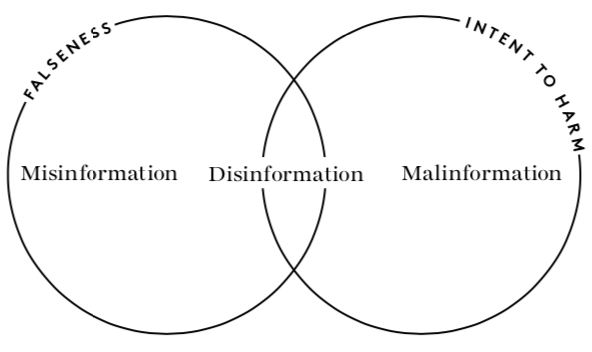Though the term "fake news" isn’t new, its recent influence on conversations about politics, the economy, society, and public health deserves serious attention.
Understanding how false information is created and spread -- and why -- is essential. Equally important is knowing how to evaluate online content to determine its truth. This is a crucial life skill.
In a paper published by First Draft News, scholar Claire Wardle identifies three types of information, falling under the umbrella of “information disorder”:

Disinformation, misinformation, and malinformation by First Draft is licensed under a Creative Commons Attribution 4.0 International License (CC-BY-4.0).
Misinformation = False content that is unintentionally or unknowingly disseminated.
Disinformation = False content that is intentionally disseminated with intent to harm.
Malinformation = Genuine content that is intentionally disseminated with intent to harm.